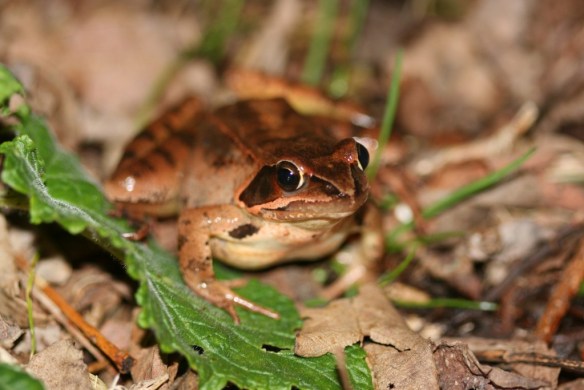In 2007, the States of Jersey Department of the Environment (DoE) launched the National Amphibian and Reptile Recording Scheme (NARRS) in the Island. The scheme forms part of the Department’s integrated ecological monitoring programme for Jersey in order to carry out ‘State of the Environment Monitoring’. NARRS is coordinated by the UK organisation Amphibian and Reptile Conservation (ARC) and Jersey’s scheme is run in partnership with the DoE and the Jersey Amphibian and Reptile Group (JARG).
There is growing concern that our widespread amphibian and reptile species are in national decline. NARRS aims to tell us more about the status of the widespread species across the British Isles, using standardised methods in a systematic way. Ecological data on these species are collected over a six-year cycle in order to (a) generate sufficient records on which to base an assessment of conservation status and (b) investigate changes in species’ occupancy over a realistic timescale. The use of established survey protocols is intended to provide a robust basis for conservation decision-making.
Jersey NARRS uses trained volunteers to carry out surveys within an allocated 1 km survey square. The scheme is currently looking for 2016 volunteer survey recorders.
There are two types of surveys available:
Ponds nearest the south-west corner of an allocated survey square are identified and, where necessary, permission to survey from the landowner and/or tenant is obtained. Letters of introduction are provided if required. Up to four (sometimes more) visits are carried out using (i) visual searching, (ii) netting, (iii) night torching and (iv) – where appropriate and if the surveyor is confident – bottle-trapping in order to detect the amphibian species present. Volunteers will be recording survey conditions (weather etc.), species present, habitat characteristics and any changes in the pond between surveys.
Reptile Survey
 Reptile surveyors use maps or aerial photographs to identify potential reptile habitat in their survey square and obtain permission to visit promising areas as necessary. Up to four (sometimes more) visits are carried out using (i) visual searching, (ii) checking existing refugia and (iii) checking artificial refugia (where it has been possible to lay these) in order to detect all reptile species present. The use of refugia is particularly important in finding slow-worms and grass snakes and they are also used by green lizards. Survey conditions, species present and habitat characteristics are recorded. It is particularly important for reptile surveys to be conducted during appropriate conditions (e.g. in good weather) to maximise detection probability.
Reptile surveyors use maps or aerial photographs to identify potential reptile habitat in their survey square and obtain permission to visit promising areas as necessary. Up to four (sometimes more) visits are carried out using (i) visual searching, (ii) checking existing refugia and (iii) checking artificial refugia (where it has been possible to lay these) in order to detect all reptile species present. The use of refugia is particularly important in finding slow-worms and grass snakes and they are also used by green lizards. Survey conditions, species present and habitat characteristics are recorded. It is particularly important for reptile surveys to be conducted during appropriate conditions (e.g. in good weather) to maximise detection probability.
If you have not done anything like this before, don’t worry as full training will be given in April (details to follow), but if you want to be involved in 2016 surveys please get in touch with Nina now at n.cornish@gov.je or by phone at 441624





